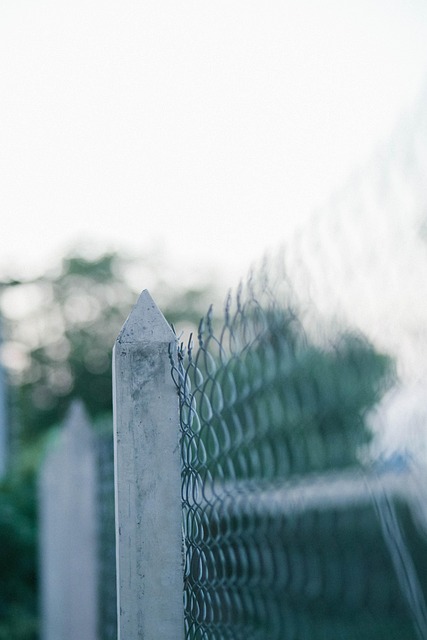Fences serve not only as structural elements but also as a design feature enhancing your outdoor space. Proper fencing maintenance, particularly staining and sealing, is key to preserving their beauty and longevity. This guide delves into the process, benefits, and considerations of fence staining, offering insights on preparation, color choices, and sealing techniques to ensure your wooden fences look their best for years to come.
- Understanding Fence Staining: Benefits and Types
- Preparing Your Wooden Fence for Staining
- Choosing the Right Stain: Color and Finish Options
- Sealing Your Stained Fence for Longevity
Understanding Fence Staining: Benefits and Types
Fence staining is a popular method to enhance and protect your wooden fence. It involves applying a colored finish, typically a stain or paint, to the fence’s surface. This process offers numerous advantages, including improving the aesthetic appeal of your outdoor space, shielding the wood from UV rays and weather damage, and increasing its lifespan. By blocking out harmful elements, staining helps maintain the structural integrity of the fence, preventing premature decay or rot.
There are various types of fence stains available in the market, each serving unique purposes. Water-based stains are popular for their low odor and quick drying time, making them environmentally friendly and easy to apply. Oil-based stains, on the other hand, provide deeper colors and better protection against extreme weather conditions. Some advanced formulas combine both oil and water components for enhanced durability and a vibrant finish. These options cater to different preferences and needs, ensuring your wooden fence stays looking its best for years to come.
Preparing Your Wooden Fence for Staining
Before applying any stain or sealer, it’s crucial to prepare your wooden fence thoroughly. Start by cleaning the fence surface with a pressure washer or brush to remove dirt, dust, and loose debris. This ensures that the stain adheres properly. After cleaning, check for any damaged or rotten sections of wood and repair them as needed. Filling cracks and replacing deteriorated boards will provide a better finish and prolong the life of your fence’s new look.
Next, sand the fence lightly to create a slightly rough surface. This process helps the stain penetrate deeper into the wood fibers, enhancing adhesion and durability. Remove any dust resulting from sanding with a clean cloth or vacuum to ensure the surface is free from residue before proceeding to staining.
Choosing the Right Stain: Color and Finish Options
When it comes to choosing the right stain for your wooden fence, color is a key consideration. Stains are available in a wide range of hues, from natural wood tones to vibrant colors. Opting for a light-colored stain will enhance the natural grain and texture of the wood, while darker shades can add depth and drama. Consider the ambiance you want to create in your outdoor space – a subtle, natural look or a bold, contemporary statement.
Additionally, you’ll encounter various finish options. Water-based stains offer a low odor and quick drying time, making them a popular choice for many homeowners. Oil-based stains penetrate deeper into the wood, providing superior protection against rot and insects, but they may take longer to dry and have a stronger scent. Solid color stains provide complete coverage and are ideal for hiding existing stains or imperfections, while semi-transparent options allow some of the natural wood character to show through.
Sealing Your Stained Fence for Longevity
After staining your wooden fence, the next crucial step is sealing it to ensure longevity and protect the vibrant new color. A good sealant creates a protective barrier against the elements, preventing damage from sunlight, rain, and extreme temperatures. It also shields against harmful UV rays that can fade the stain over time. Choose a high-quality, water-based sealant designed specifically for outdoor use on wood.
Regularly sealing your fence—typically every 1 to 3 years, depending on exposure—will maintain its beauty and extend its lifespan. During each sealing session, make sure to clean the fence first to remove any dirt or debris that could interfere with the sealant’s adhesion. This simple maintenance routine will keep your fence looking as good as new for years to come.
